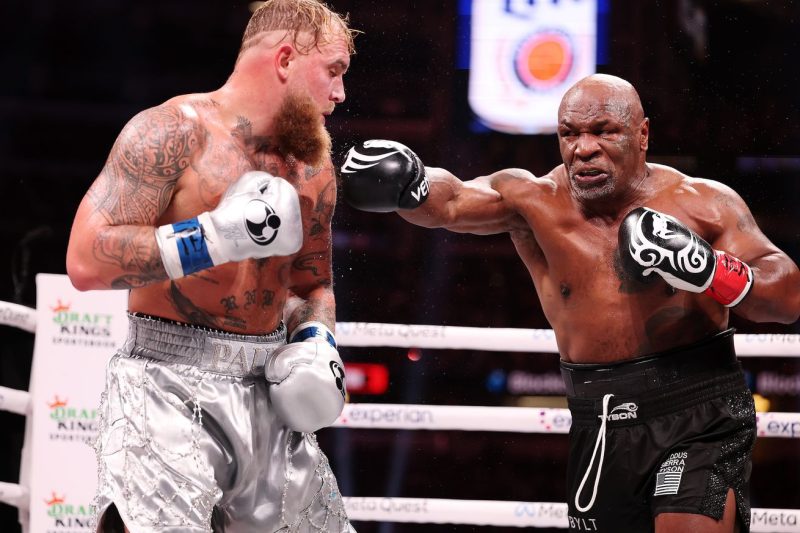The recent exhibition boxing match between Mike Tyson and Jake Paul has caused a stir in the sporting world, sparking various discussions and debates surrounding the event. One interesting development that emerged from the fight was Netflix’s decision to stream the event to a staggering 60 million households. This move by the streaming giant represents a significant shift in the distribution of sporting events and raises intriguing questions about the future of live sports broadcasting.
Traditionally, pay-per-view platforms have been the go-to method for broadcasting high-profile sporting events, offering fans the opportunity to access exclusive content for a fee. However, Netflix’s decision to stream the Tyson vs. Paul fight to such a large audience demonstrates the growing trend of major streaming services entering the live sports market. By making the fight available to a wide audience, Netflix effectively democratized access to the event, allowing a much larger number of viewers to tune in without having to pay a separate fee.
This move by Netflix has the potential to disrupt the traditional pay-per-view model and reshape the way fans consume live sporting events. While pay-per-view has long been a lucrative revenue stream for sports organizations and broadcasters, the rise of streaming services entering the live sports market could signal a shift towards a more accessible and inclusive model of sports broadcasting. By streaming events to a large subscriber base, platforms like Netflix can reach a broader audience and potentially attract new viewers who may not have been willing to pay for a one-time event.
Moreover, the Tyson vs. Paul fight serves as a prime example of how streaming services are leveraging their extensive reach and resources to secure exclusive content and capitalize on the growing demand for live sports programming. With Netflix’s vast subscriber base and global reach, the streaming giant has the ability to negotiate lucrative deals with sports organizations and secure rights to major events, further solidifying its position as a major player in the live sports broadcasting landscape.
In conclusion, Netflix’s decision to stream the Tyson vs. Paul fight to 60 million households highlights the evolving landscape of live sports broadcasting and the increasing role of streaming services in delivering exclusive content to a wide audience. As platforms like Netflix continue to expand their reach and invest in live sports programming, it will be interesting to see how the traditional pay-per-view model adapts to the changing demands of sports fans and how streaming services shape the future of sports broadcasting.

